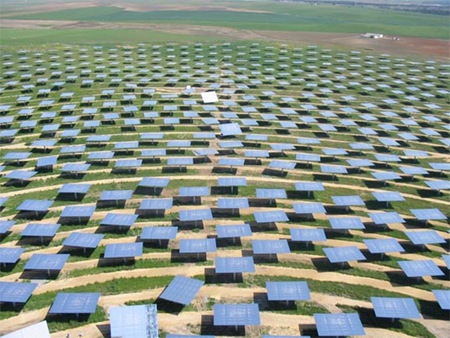Save Money With Solar Panels
So 2008 is winding down and many things have happened this year. Recently the particle accelerator (Large Hadron Collider) was fired up and Barack Obama made young people everywhere have faith in politics.
But the real theme of 2008 has been
gas prices. Many people everywhere are still wondering whether gas prices are going to get any cheaper. The reality is that, it will never get cheaper. That's right -
never. Not only will gas never get cheaper, but everything we pay for that relies on
petrochemicals for production - that is - everything you use - from your chair, computer, desk, plastics, vehicles - will never get cheaper.
Just think about that for a moment - everything that you rely on takes a source of energy that is quickly depleting. It takes many different refined sources of oil (petrochemicals) to manufacture pretty much all the goods and technology we enjoy in abundance. Some argue we have 20 years left, some argue we have 50 - the bottom line is there is a time line within most of our lifetimes.
Let's take a look at your home or apartment for a moment.Depending on your location, your home is tied into a vast energy grid that is powered by things such as Hydroelectric dams to coal power plants. All of these take petrochemicals to maintain and construct as well.

My main point here is that, as a globe we need to begin changing our energy infrastructure while we have the oil to do it. Don't sweat though, the power is actually in your hands.
So while we have this black gold available, we're still able to manufacture such things as
solar panels to empower people to get off the grid.


Solar panels are pretty new, but have been around in theory for many many years. If you're a home owner, or even live in a small apartment - a solar panel can help you save money in the long run. But why should you invest besides reasons such as a lack of oil resources?
Here's 5 reasons why you should:Reason #1 - Durability & LongevityOn average, a solar panel can last up to 30 years or more. With just a few arrays set up, you can be powering your home with your own renewable energy. Not only that, but solar panels are designed to withstand harsh climates. One common misconception is that you need the sun shining to convert to electricity. Solar panels can still convert from solar energy to electrical or thermal power even on a cloudy day (although not at the same capacity).
Reason #2 - Unlimited Power!While everyone else is crying and whining about gas prices and high energy costs - you will have an unlimited supply of solar power. Unless the sun blows up and destroys our entire solar system - you won't really need to worry about never having power

.
Reason #3 - Tax IncentivesOnce you invest into solar, you are eligible for
Federal, State, Provincial And Utility Tax incentives and rebates. These aren't the
'$30 off' from your coffee maker rebates -
they add up big time! For example, in Australia, if you spend $16,000 on a solar set up, they will rebate you up to $8000 back. This doesn't include other rebates you can get either. You'll need to check your own country's government policies - but, in the next 5-10 years - all countries will be jumping on the solar bandwagon.
Reason #4 - Not Just A 'One Time' Set Up + Easy InstallationWith solar, you don't need to invest into a bunch of costly arrays right away. You're able to set up one panel at a time, and add additional panels whenever you feel the time is right. Furthermore, installing a solar panel is actually quite a lot easier than people think. You can do it yourself, or have an installer come and have it set up for you the same day.
Reason #5 - Add A 'Capacitor' And You Are Laughing + No More 'Blackouts'A capacitor is a device that lets you store unused energy. So if you're over producing solar energy - usually two things happen. You can either give that energy back into the system grid (that is, pooling your energy into the grid for other people in your community to use) or you can store it in a capacitor. If you were ever to run out of energy, or you are seeing 'under production' - a capacitor lets you have energy that you stored previously. This means you will always have a back up of energy in a time of crisis.
What this also means (and having solar in general) is that when the system grid goes over its maximum energy potential (that is, too much energy is being used in the city which causes a blackout) - you will still be powered up! Your neighbors will be looking in jealousy at the one shiny house in the block.
So there you have it. If you're still not convinced - check out
http://solar.envirohub.net for more information.













 .
.













